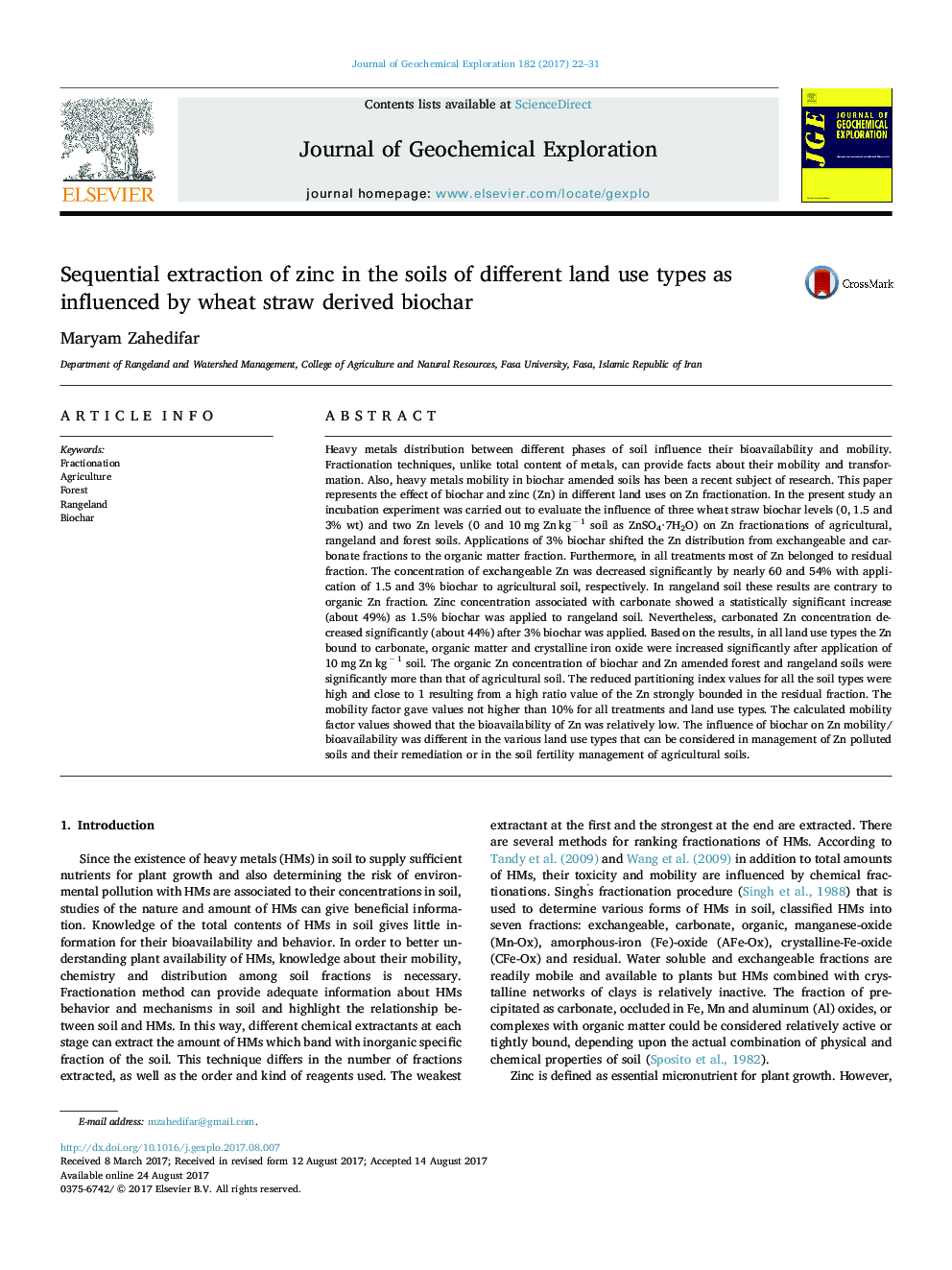| کد مقاله | کد نشریه | سال انتشار | مقاله انگلیسی | نسخه تمام متن |
|---|---|---|---|---|
| 5754512 | 1412614 | 2017 | 10 صفحه PDF | دانلود رایگان |
عنوان انگلیسی مقاله ISI
Sequential extraction of zinc in the soils of different land use types as influenced by wheat straw derived biochar
ترجمه فارسی عنوان
استخراج متوالی روی در خاک های مختلف انواع مختلف استفاده از زمین تحت تأثیر زیست گدای مشتق شده از گندم
دانلود مقاله + سفارش ترجمه
دانلود مقاله ISI انگلیسی
رایگان برای ایرانیان
کلمات کلیدی
موضوعات مرتبط
مهندسی و علوم پایه
علوم زمین و سیارات
زمین شناسی اقتصادی
چکیده انگلیسی
Heavy metals distribution between different phases of soil influence their bioavailability and mobility. Fractionation techniques, unlike total content of metals, can provide facts about their mobility and transformation. Also, heavy metals mobility in biochar amended soils has been a recent subject of research. This paper represents the effect of biochar and zinc (Zn) in different land uses on Zn fractionation. In the present study an incubation experiment was carried out to evaluate the influence of three wheat straw biochar levels (0, 1.5 and 3% wt) and two Zn levels (0 and 10 mg Zn kgâ 1 soil as ZnSO4 â 7H2O) on Zn fractionations of agricultural, rangeland and forest soils. Applications of 3% biochar shifted the Zn distribution from exchangeable and carbonate fractions to the organic matter fraction. Furthermore, in all treatments most of Zn belonged to residual fraction. The concentration of exchangeable Zn was decreased significantly by nearly 60 and 54% with application of 1.5 and 3% biochar to agricultural soil, respectively. In rangeland soil these results are contrary to organic Zn fraction. Zinc concentration associated with carbonate showed a statistically significant increase (about 49%) as 1.5% biochar was applied to rangeland soil. Nevertheless, carbonated Zn concentration decreased significantly (about 44%) after 3% biochar was applied. Based on the results, in all land use types the Zn bound to carbonate, organic matter and crystalline iron oxide were increased significantly after application of 10 mg Zn kgâ 1 soil. The organic Zn concentration of biochar and Zn amended forest and rangeland soils were significantly more than that of agricultural soil. The reduced partitioning index values for all the soil types were high and close to 1 resulting from a high ratio value of the Zn strongly bounded in the residual fraction. The mobility factor gave values not higher than 10% for all treatments and land use types. The calculated mobility factor values showed that the bioavailability of Zn was relatively low. The influence of biochar on Zn mobility/bioavailability was different in the various land use types that can be considered in management of Zn polluted soils and their remediation or in the soil fertility management of agricultural soils.
ناشر
Database: Elsevier - ScienceDirect (ساینس دایرکت)
Journal: Journal of Geochemical Exploration - Volume 182, Part A, November 2017, Pages 22-31
Journal: Journal of Geochemical Exploration - Volume 182, Part A, November 2017, Pages 22-31
نویسندگان
Maryam Zahedifar,
